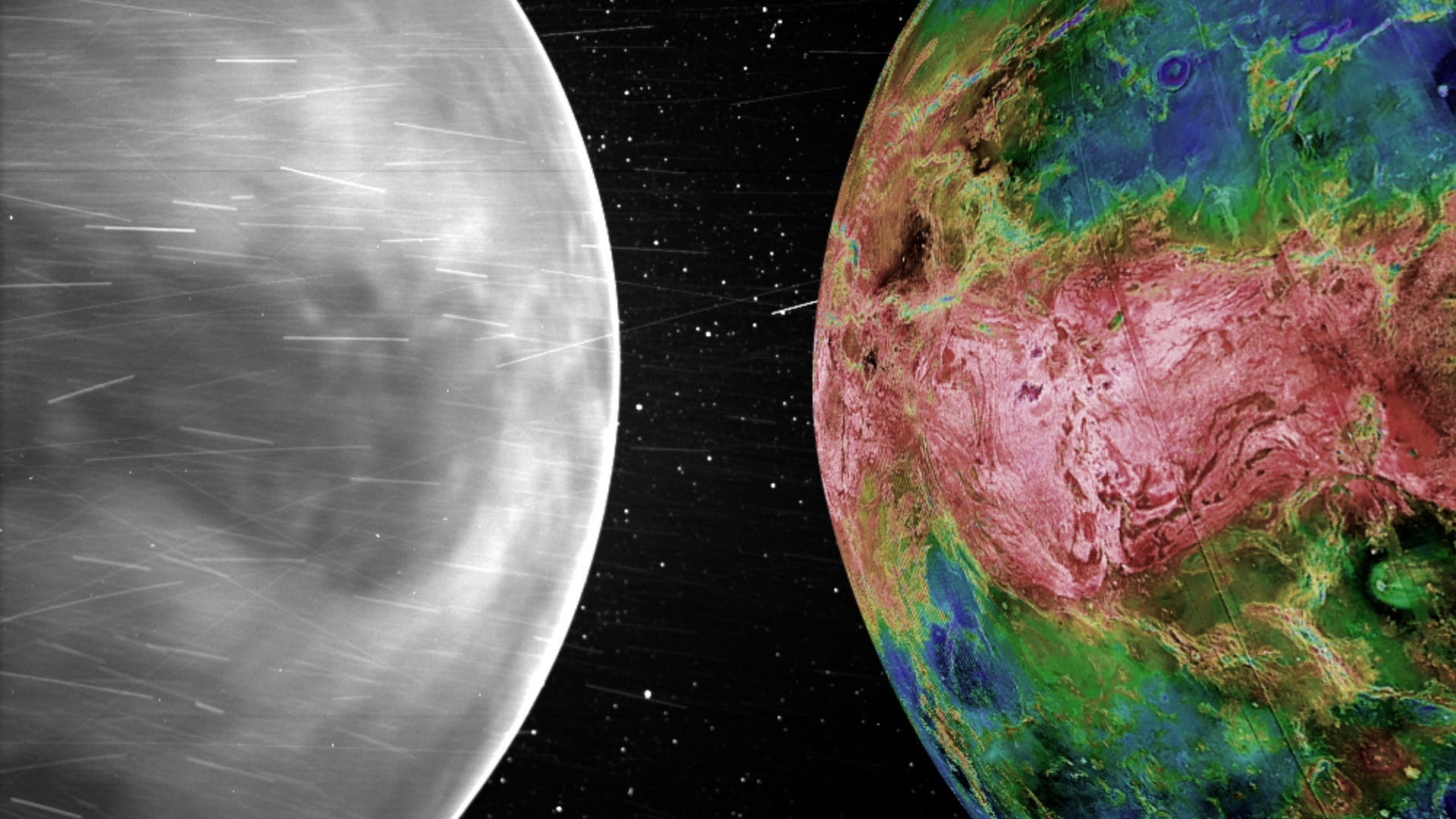The Parker Solar Probe’s mission is to study the Sun. But the spacecraft’s instruments have nabbed some pretty impressive data on Venus, as it uses the planet for gravity assists in its ever-shrinking solar orbit.
Now, the spacecraft has captured visible light images of Venus’ surface, somehow able to peer through the shroud of clouds in the planet’s atmosphere.
This is complete bonus data that wasn’t ever expected.
“The images and video just blew me away,” said Brian Wood, a physicist at the Naval Research Laboratory in Washington, DC. Wood is the lead author of a new study detailing the images, published in Geophysical Research Letters.
On it’s fourth flyby of Venus in February of 2021, Parker’s visible light camera, the Wide-field Imager for Parker Solar Probe, or WISPR, captured views of the planet’s nightside. WISPR was designed to see faint features in the solar wind flowing out from the Sun.
The mission scientists thought they could use the cameras to see Venus’ clouds during flybys of the planet, and you may recall we reported last year how WISRP somehow captured Venus’ surface in infrared light, during flyby number three.
Now, they’ve captured visible light images – the light that humans can see – where light and dark surface features are visible through the planet’s clouds.

While the Soviet Venera spacecraft took images during their short life on the surface, this is the first time visible light from the Venusian surface has been captured from space.
Mission scientists said they expected WISPR to capture Venus’ thick, carbon dioxide clouds, which normally block views of the surface. But instead, the camera was able see through the clouds, revealing the dark-tinted shape of Aphrodite Terra, a highland area near Venus’ equator. The feature appears dark because of its lower temperature, about 85 degrees Fahrenheit (30 degrees Celsius) cooler than its surroundings.
“WISPR is tailored and tested for visible light observations,” said Angelos Vourlidas, the WISPR project scientist. “We expected to see clouds, but the camera peered right through to the surface.”
The images, combined into this video, reveal a faint glow from the surface that shows distinctive features like continental regions, plains, and plateaus. A luminescent halo of oxygen in the atmosphere can also be seen surrounding the planet.
The WISPR images show features on the Venusian surface, such as the continental region Aphrodite Terra, the Tellus Regio plateau, and the Aino Planitia plains. Since higher altitude regions are about 85 degrees Fahrenheit cooler than lower areas, they show up as dark patches amidst the brighter lowlands. These features can also be seen in previous radar images, such as those taken by Magellan.
Beyond looking at surface features, scientists said the new WISPR images will help to better understand the geology and mineral make-up of Venus, as well provide clues to the planet’s evolution. The new images will also be helpful for the two upcoming missions planned for Venus.
“By studying the surface and atmosphere of Venus, we hope the upcoming missions will help scientists understand the evolution of Venus and what was responsible for making Venus inhospitable today,” said Lori Glaze, director of the Planetary Science Division at NASA Headquarters. “While both DAVINCI and VERITAS will use primarily near-infrared imaging, Parker’s results have shown the value of imaging a wide range of wavelengths.”
Lead image caption:
Surface features seen in the WISPR images (left) match ones seen in those from the Magellan mission (right).
Credits: NASA/APL/NRL (left), Magellan Team/JPL/USGS (right)

